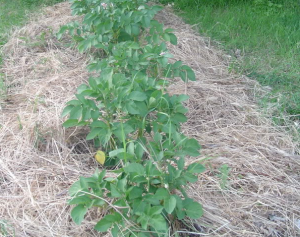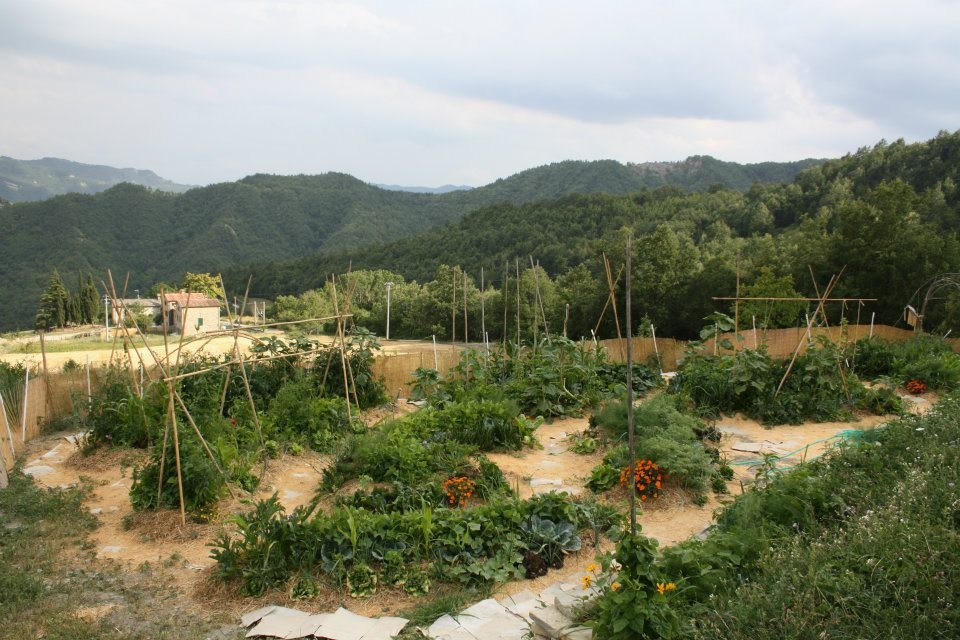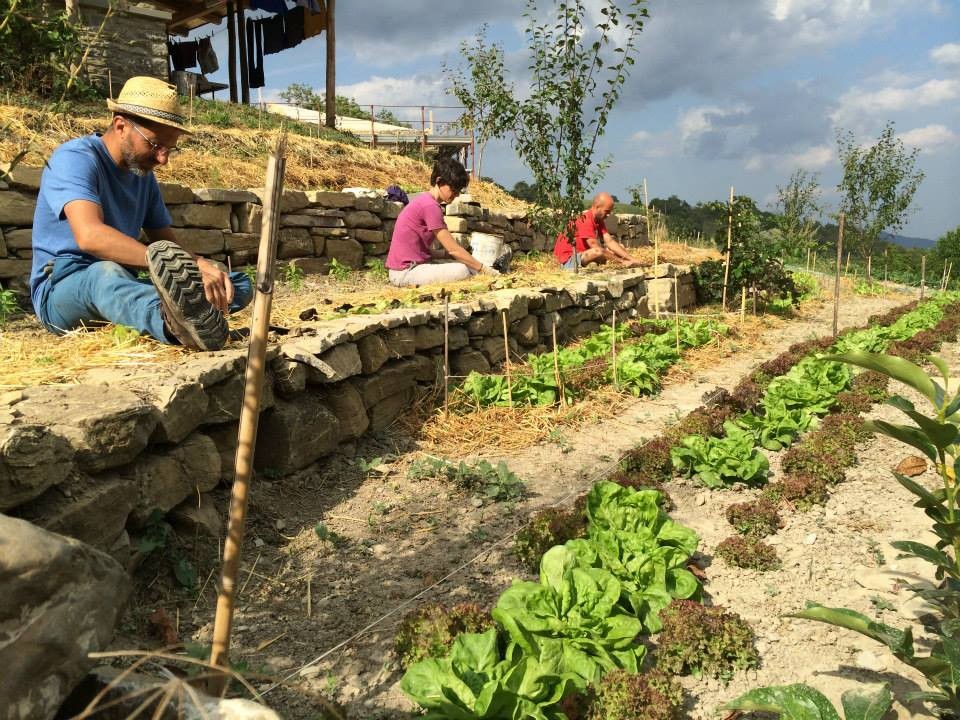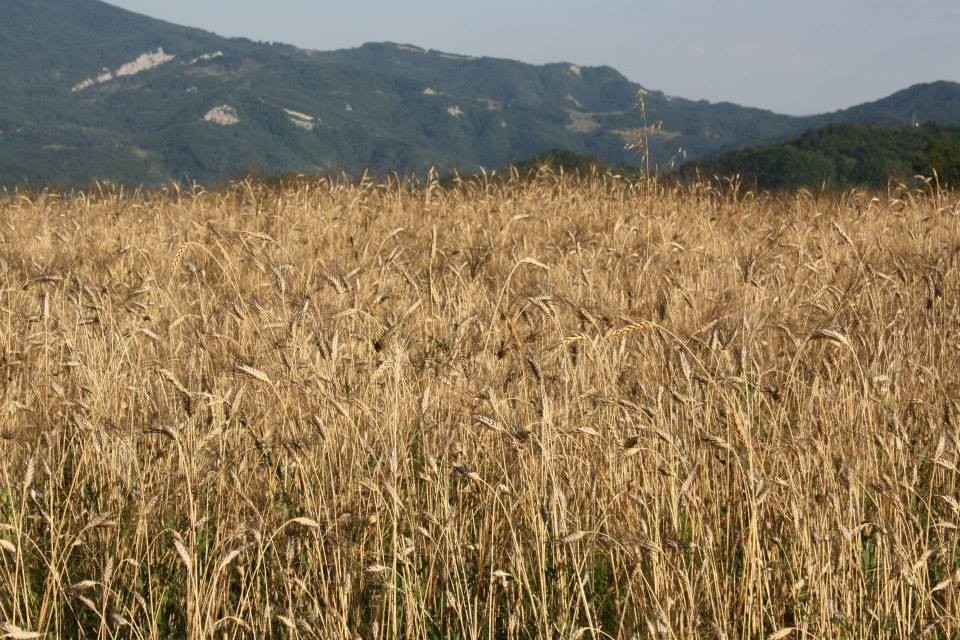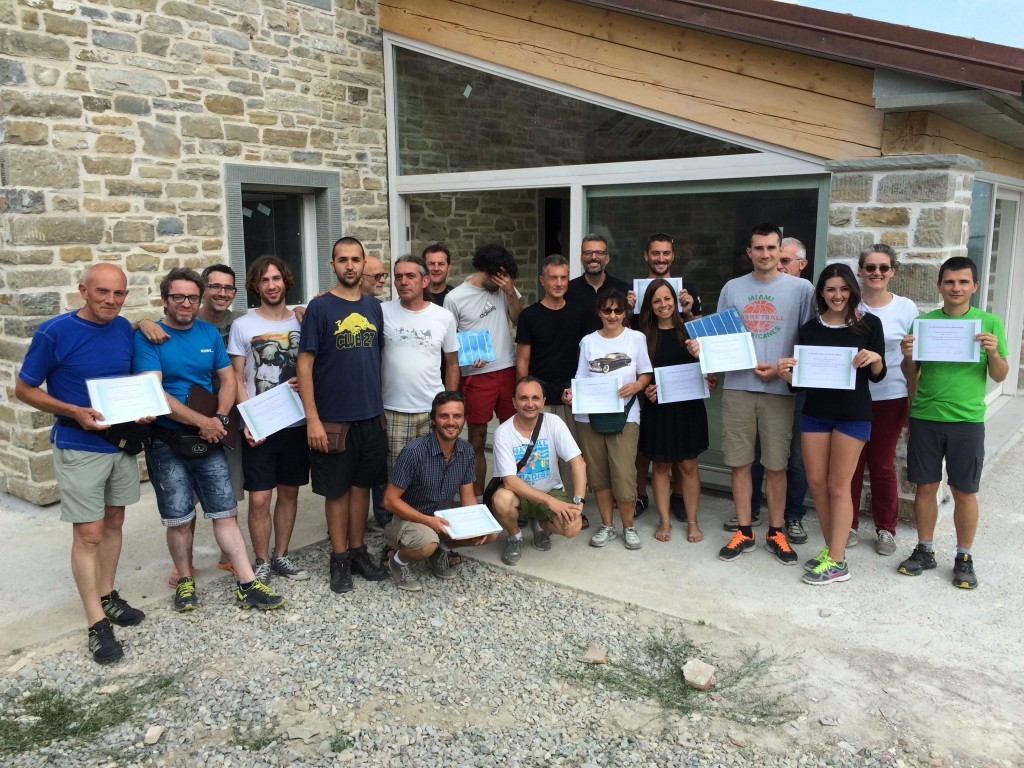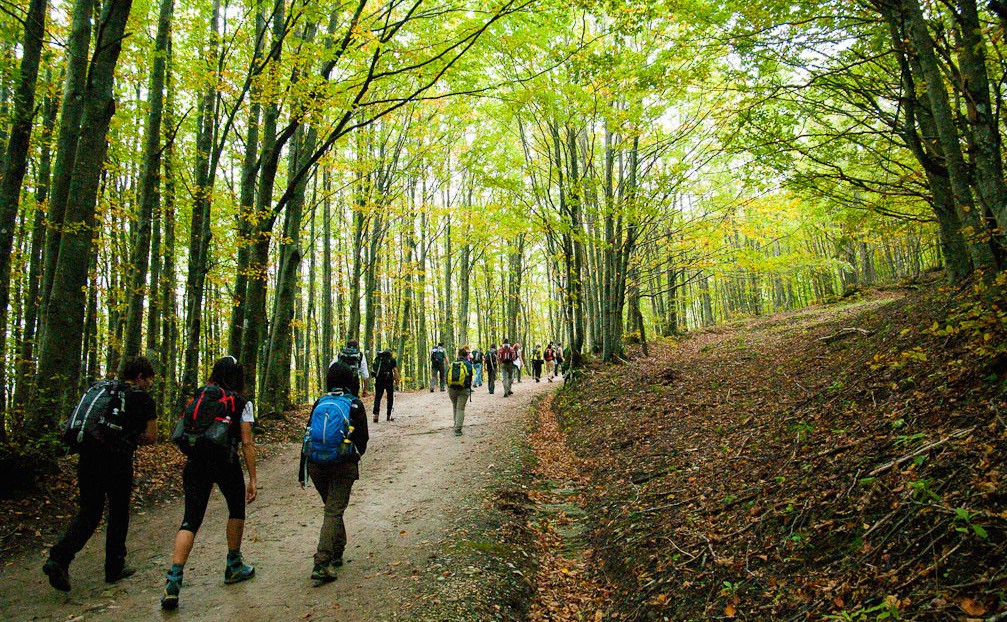EXPERIMENTS AT THE FARM: growing potatoes
During the course on How to create an eco-friendly vegetable garden with Sergio Abram (April 2011) we decided to spare 3 vegetable beds for growing potatoes (Kennebeq variety).
After preparing the ground and building the bed, we planted the potatoes and covered them with a little of straw. Potatoes don’t need to be covered with ground, instead they need darkness. The distance among potatoes was 40-50 cm and the bed had an irrigation system that provides water during the whole growing phase. Potatoes don’t need any care, or at least that’s what we thought.
SYNERGISTIC AGRICULTURE
We cannot talk about synergistic agriculture without speaking of its inventor, the Spanish permaculturist Emilia Hazelip (1937 – 2003) who developed and then spread this farming method that is inspired by Masanobu Fukuoka’s Natural Farming and Bill Mollison’s Permaculture.
The principles of Permaculture that Emilia most endorsed are living without destroying and the production of better food with the least energy and fuel consumption.
On the other hand, Fukuoka’s work was the demonstration that working the ground is not necessary. By constantly keeping the natural fertility of the soil we can get long-lasting results and a good quality production.
FOOD AND ENERGY SELF-SUFFICIENCY FOR A BETTER FUTURE
We believe that food and energy self-sufficiency and green building can be the answers to the great challenges we are living for the following reasons:
GENTIL ROSSO AND SENATORE CAPPELLI WHEAT FLOURS
The first two flours produced at the Farm with 2014 harvest are now available.
GREEN RENOVATION OF THE HISTORICAL BUILDING “CASELLE DI PAGANICO”
After almost three years spent reorganizing the fields, terracing, creating vegetable gardens, building dry walls, fences, a water supply system, laying underground electric and telephone cables and planting ancient fruit trees, in 2014 we finally started the first renovation works of the historical building “Caselle di Paganico” in line with the pillars of the whole project.
BUILDING SOLAR PANELS IS EASY!
From July 11th to 13th 2015 the Farm hosted a course on self-construction of solar panels. The expert Luigi Lisi taught participants the theory and practice for the construction of a solar panel by using recyclable materials and purchased solar cells. Luigi also provided examples on how to turn a house or another project self-sufficient in terms of energy production.
We took advantage of this happy occasion to ask Luigi few questions.
THE NATIONAL PARK OF THE CASENTINO FORESTS, MONTE FALTERONA AND CAMPIGNA
Close to the Farm and between Romagna and Tuscany, we find one of the most beautiful green areas in Europe: The National Park of the Casentino Forests, Monte Falterona and Campigna.
It measures 36,000 hectares and includes woods, rivers, birds, archaeological sites, mammals, flowers, rocks, waterfalls, crests, valley and spiritual places. It’s a protected area among the provinces of Forlì-Cesena, Arezzo and Florence.
OUR PASTA: more than organic, from ancient and local grains
At the Self-Sufficiency Farm we only produce food which is good both for our health and the environment!
Ancient grains are grains varieties that are largely unchanged over the last several hundred years, that is to say that they have not been modified by man in order to increase their productivity. One of the most known example in Italy is the wheat variety “Senatore Cappelli”, but there are many others depending on the region of production. Other examples are: Saragolla, Tumminia, Einkorn wheat, Gentil Rosso, Verna, Rieti, etc.
TWO-ROW HULLESS BARLEY “LEONESSA”
Hulless or “naked” barley (Hordeum vulgare) is a form of domesticated barley with an easier-to-remove hull.
The early-ripening variety called “Leonessa” is organically cultivated at the Self-Sufficiency Farm. This type of barley was selected from a local population by geneticist Nazzareno Strampelli in 1936, then it has been revived by CERMIS (Center of research for the improvement of vegetable species) that dealt with the protection of Leonessa in the first years of the 80s.
The millenary HOLY HERMITAGE OF CAMALDOLI
The monastic settlement of Camaldoli was founded 1000 years ago by Saint Romuald, who chose this place surrounded by thick firs forests as a place for retreat and mediation.
The care of the wood was so important that it was included among the rules of the religious order. In 1012 the Benedictin monk founded in Campo Amabile the current Hermitage of Camaldoli, the first 5 cells and a small oratory. In the following year he re-arranged an existing building to be used as accommodations that is the current monastery of Camaldoli.
Newsletter
ARGOMENTS
- Activities (8)
- Farm products (4)
- Fattoria dell'autosufficienza (39)
- News (63)
- Our models (14)
- Permaculture (23)
- Senza categoria (2)
- Things to do (22)
- Tourist attractions (15)
